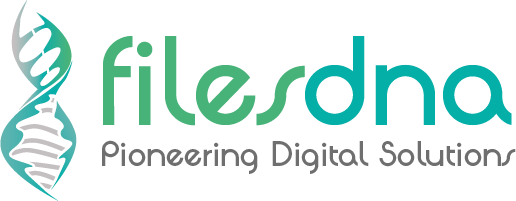Human Resources (HR)

How an e-signature and document management system (EDMS) can be particularly beneficial for Human Resources (HR) departments:
An e-signature and document management system can be beneficial for Human Resources (HR) departments, as it allows them to efficiently manage the signing and storage of employee-related documents.** The implementation of this system has myriad applications in HR functions, transforming traditional processes into more streamlined, automated workflows.
Onboarding
HR departments are responsible for the new employee onboarding process, which includes collecting and storing various documents such as employment agreements, tax forms, and benefits paperwork. Using an EDMS, HR can create a seamless, paperless onboarding experience. New hires can complete and sign necessary documents electronically, speeding up the process and reducing administrative burdens.
Employee Files Management
Maintaining accurate and up-to-date records of employee information is vital. An EDMS enables HR professionals to organize and store essential employee files, including performance evaluations, promotions, salary increases, and disciplinary actions. This centralized management fosters transparency, efficiency, and helps HR staff access critical information at the click of a button.
Compliance
With various regulations such as labor laws, equal opportunity laws, and immigration laws, ensuring compliance is a complex task. An EDMS enables HR departments to monitor, track, and store all relevant documents, certifications, and audits. This not only aids in compliance but offers valuable insights to identify potential risks and address them proactively.
Employee Benefits Administration
Managing employee benefits like health insurance, retirement plans, and other perks requires meticulous oversight. An EDMS offers an efficient way for employees to enroll in benefits, while HR can effortlessly track and store all related documentation. Automation features may further enhance personalization, reminding employees about enrollment deadlines or changes in benefit options.
Performance Management
From setting goals to tracking performance, an EDMS facilitates a smooth performance review process. HR managers can access past evaluations, set reminders for future reviews, and even incorporate feedback from multiple sources. This digital approach ensures consistency, fairness, and helps in creating a performance-driven culture.
Exit Process
The exit process, including exit interviews, return of company assets, and final paycheck documentation, can be cumbersome. An EDMS streamlines this process, creating a systematic approach that minimizes errors and ensures compliance with legal obligations.
Training and Development
An EDMS can be used to manage employee training and professional development programs. HR can schedule training sessions, monitor attendance, evaluate effectiveness, and store all related documentation, creating a cohesive and well-structured learning environment.
Remote Work and Collaboration
In an increasingly virtual workplace, HR must manage remote teams and collaboration. An EDMS allows for the signing of remote work agreements, tracks productivity, and facilitates communication among distributed teams.
Disaster Recovery and Security
HR departments handle sensitive data that must be protected. EDMS offers encryption and security measures that ensure the confidentiality and integrity of information, while robust backup and recovery features protect against data loss.
Conclusion
Overall, the integration of an e-signature and document management system not only modernizes HR processes but strategically positions HR as a value-adding function in the organization. By improving efficiency, compliance, and security, HR professionals are empowered to focus on more strategic, human-centric aspects of their role. This digital transformation reflects a commitment to innovation, employee satisfaction, and business excellence, making it a vital investment for forward-thinking HR departments.
Frequently Asked Questions (FAQs)
Q1: What is an e-signature and document management system, and how does it work in HR?
A: An e-signature and document management system (EDMS) allows HR departments to collect electronic signatures and manage digital documents, streamlining processes like onboarding, compliance, employee benefits administration, and more. It works by digitizing paper-based tasks, centralizing information, and automating workflows.
Q2: Is an EDMS secure for handling sensitive HR documents?
A: Yes, most EDMS solutions offer robust security features including encryption, access controls, and secure storage, ensuring that sensitive HR documents are protected against unauthorized access and breaches.
Q3: How does an EDMS enhance the onboarding process?
A: An EDMS accelerates the onboarding process by allowing new hires to complete, sign, and submit necessary forms electronically. This paperless approach saves time, reduces errors, and creates a more engaging experience for new employees.
Q4: Can an EDMS be customized to fit the specific needs of an HR department?
A: Many e-signature and document management systems offer customizable features to match the unique requirements and processes of an HR department, including integration with existing HR software and tools.
Q5: How does an EDMS help with compliance in HR?
A: An EDMS aids compliance by providing an auditable trail of all actions and documents. It helps HR departments track, organize, and store necessary documents, certifications, and audits, simplifying compliance with various regulations.
Q6: Does an EDMS work for remote or distributed teams?
A: Yes, an EDMS supports remote work by allowing documents to be accessed, signed, and managed from anywhere. This fosters collaboration among distributed teams and enables HR functions to be conducted seamlessly across different locations.
Q7: What is the ROI of implementing an EDMS in HR?
A: The return on investment (ROI) of implementing an EDMS can be seen in time savings, reduced administrative burdens, increased efficiency, improved compliance, enhanced security, and overall modernization of HR functions.
Q8: How do employees interact with an EDMS?
A: Employees can interact with an EDMS through a user-friendly interface that allows them to view, sign, submit, and track documents related to their employment, benefits, performance evaluations, etc. Training and support can facilitate smooth adoption.
Q9: How can a company choose the right EDMS for its HR department?
A: Choosing the right EDMS involves understanding the specific needs, challenges, and goals of the HR department. Factors like scalability, customization, integration capabilities, support, security, and pricing should be considered.
Q10: Can an EDMS handle both permanent and temporary staff documents?
A: Yes, an EDMS can be configured to manage documents for all types of employees, whether permanent, temporary, or contract, allowing for uniformity and consistency in document management.




